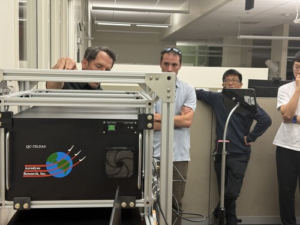
Rathy Barthlote and her family find themselves in a precarious situation as they navigate Australia’s complex immigration system. Her 11-year-old daughter, Lolitta, born in Australia, became a citizen with full rights at the age of ten. However, Ms. Barthlote, her husband, and their 16-year-old daughter, Logitha, remain asylum seekers with limited rights, having lived in Australia since 2014 while their refugee claims are processed.
“Their friendships, schooling, and sense of belonging are all here,” Ms. Barthlote expressed. “One child has everything, the other child is worried about her future.”
The stark contrast in residency status between sisters Logitha and Lolitta highlights the challenges faced by thousands of asylum seekers in Australia. Ms. Barthlote’s family lives in constant fear of deportation, a concern that has prompted her older daughter to question the possibility of separation from her younger sibling.
Historical Context and Policy Changes
Shortly after Ms. Barthlote and her family arrived in Australia by boat in 2013, the then-Abbott government implemented the ‘Fast Track’ system to expedite the processing of boat arrivals’ claims. This system, criticized by Labor for being unfair, limited procedural rights compared to other asylum seekers. Although Labor abolished the system upon gaining power, unresolved issues persist for many affected individuals.
Ms. Barthlote is among approximately 8,000 asylum seekers who arrived between 2012 and 2013 and whose claims were rejected by the system. Many continue to appeal these decisions, citing unfair processes. While some, like Ms. Barthlote’s family, have work and school rights, others do not, living on bridging visas with uncertain futures.
Calls for Government Action
Former Coalition immigration minister Alex Hawke has called on the government to address the status of asylum seekers left in limbo. “People have been here a long time. And the reality of their condition is that they will be staying here,” Mr. Hawke stated. “We now have to deal with the actual reality of the situation.”
Despite the previous Coalition government’s inaction on this issue, Mr. Hawke now supports measures to resolve it. “It’s time the Labor Party committed to resolving the issues. Some of those are tricky, but a lot of them are now no longer tricky,” he asserted.
Case Study: A Tale of Two Outcomes
The plight of asylum seekers like Ms. Barthlote is mirrored by Priya Nadesalingam, a Tamil asylum seeker whose case gained national attention. Both women arrived in Australia on the same boat in 2013, fleeing Sri Lanka’s civil war to seek refuge. While the Nadesalingam family was eventually granted permanent residency after a community campaign, Ms. Barthlote’s future remains uncertain.
Ms. Barthlote’s case has been entangled in legal proceedings for over a decade. After her initial refugee claim was rejected by the Immigration Assessment Authority (IAA), she successfully appealed, only for the IAA to reject it again. Her subsequent appeal in 2019 is still pending a hearing.
Life in Limbo: The Impact on Families
While awaiting resolution, Ms. Barthlote and her husband have established a life in Melbourne’s western suburbs. She works in aged and disability care and part-time at a union, while her husband holds two jobs. Their daughter Logitha aspires to study forensic science at university, but her bridging visa status poses financial barriers.
“She wants to have a dream but she can’t get that dream,” Ms. Barthlote lamented.
Unlike her sister, Logitha faces challenges such as enrolling as a foreign student, lacking a passport, and having limited access to Medicare. Her long-term future in Australia remains uncertain.
Government’s Response and Future Prospects
Since taking office in 2022, the Labor government has worked to resolve the status of around 20,000 refugees under the Fast Track system, transitioning them to a “permanent visa pathway.” However, the fate of the remaining 8,000 asylum seekers, including Ms. Barthlote, remains unclear.
The Home Affairs Minister continues to use ministerial intervention on a case-by-case basis, but the criteria for granting permanent residency are not transparent. Sanmati Verma, legal director at the Human Rights Law Centre, criticized the policy as “cruel” and divisive.
“There is no clear rationale or consistency as to who is afforded this treatment and who is not,” Ms. Verma noted.
Ms. Verma advocates for recognizing the contributions of long-term residents and granting them permanent visas. Meanwhile, a spokesperson for the Home Affairs Department stated that those with rejected claims are expected to depart Australia voluntarily, although new credible claims may be considered for ministerial intervention.
For Ms. Barthlote and her family, securing a future in the country they have called home for over a decade remains a pressing concern. “We are part and parcel of this community. We have no home to return to in Sri Lanka,” she concluded.






